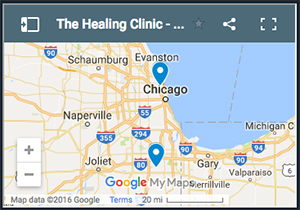Tips for discovering your preferred strain product and method of consumption. | Infographic
Medical cannabis can do wonders for your health. It can reduce pain, anxiety, nausea, depression, muscle spasms. It can give you relief from inflammatory bowels. It can stop the growth of lung, prostate and breast cancer cells. It can provide hope for those suffering from PTSD (Post Traumatic Stress Disorder).
When used properly cannabis can be a wonder drug. Using it properly starts with finding the best type of medical cannabis for your needs. This can be an overwhelming task considering the countless different strains that are available in dispensaries. These include Sativas, Indicas Hazes, Ruderalis and Hybrids, each possessing a unique genetic makeup. Products vary as well and include flower, edibles, tinctures, concentrates, oils, transdermal patches, capsules, suppositories, the list goes on. Due to the absence of FDA-approved studies there are no accurate dosing schedules or guides that exist for specific conditions and symptoms, therefore it is mainly trial and error when discovering the right product, strain and method of consumption for your needs.
These are the primary methods of consuming medical cannabis:
- Vaporization: Vaporizing or ‘vaping’ involves placing cannabis flower, oil or other concentrates in a pen or plug-in device. The cannabis matter is then heated to a temperature that is cooler than the point of combustion and turns the product into a vapor. This means the user doesn’t inhale smoke, but vapor instead. By using a vaporizer, consumers are able to avoid inhaling the harmful by-products usually found in cannabis smoke. The effects come on quickly, usually within minutes and generally last for an hour or less.
- Edibles: Comes in numerous forms. Pretty much any type of food can be infused with medical cannabis oil. Effects can be hard to predict and differ between individuals. Edibles introduce cannabinoids through the gastrointestinal tract. The result is a high that is more intense and lasts much longer. Usually take 30 to 60 minutes to start working, however the effects can last between 4 to 12 hours depending on the dose.
- Pills: Ingestible oils that come in capsules or plastic applicators which can be consumed as is or added to food or drink. Like edibles, ingestible oils can induce powerful and long lasting effects that take a while to kick in.
- Tinctures: Infused liquids that extract cannabis compounds using an alcohol soak. Tinctures work best when applied directly under the tongue. tinctures enter the bloodstream immediately, allowing for fast-acting effects and better dose control. A variety of flavors, potencies, and cannabinoid profiles are available in dispensaries.
- Topical- Balms, Lotions, Transdermal Patches: for localized application where you have pain, soreness or migraines. These products may have a strong odor. You may experience the psychoactive or “high” effect from balms and transdermal patches that contain THC.
However you decide take your medical cannabis, it’s essential that you avoid driving or using machinery afterward until you know how it will affect you.
This still leaves the question of which strain is best for you.
Finding the best strain of medical cannabis depends on what condition you’re treating. It also depends on what degree of a high you’re able or willing to tolerate. The higher the THC content, generally, the higher the high. On the other hand, CBD has little psychoactive effects.
High CBD strains offer benefits for those with:
- Crohn’s Disease
- Multiple Sclerosis
- Dravet’s Syndrome
- PTSD
- Hypertension
- Inflammation
- Inadequate appetite
- Stress and Anxiety
- Pain
High THC strains offer benefits for those with:
- Obesity
- Tremors
- Parkinson’s Disease
- Neurological Disorders
- Pain





